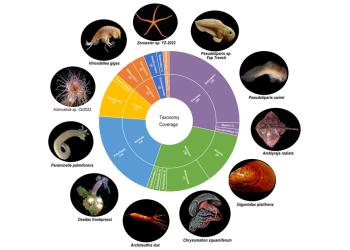Breakthrough Discoveries in Ising Superconductivity
Theoretical physicists from the Department of Physics at the Hong Kong University of Science and Technology (HKUST) gave an explanation to the phenomenon of superconductivity surviving under strong magnetic field, offering a theoretical answer to an unsolved experimental observation by a group of scientists in the Netherlands.
The collective findings were published on November 12, 2015 in Science.
[DOI:10.1126/science.aab2277].(http://m.sciencemag.org/content/early/2015/11/11/science.aab2277.abstract)
Superconductivity is a quantum phenomenon in which electrons form pairs and flow with zero resistance. However, strong enough magnetic field can break electron pairs and destroy superconductivity. When researchers from the Netherlands informed Prof Vic Law’s team that superconductivity in thin films of MoS2 could withstand an applied magnetic field as strong as 37 Tesla, Prof Law and his student Noah Yuan came up with an explanation.
Prof Law’s team proposed that the lattice structure of MoS2 thin films allows the moving electrons in the material to experience strong internal magnetic fields of about 100 Tesla. This special type of internal magnetic fields, instead of damaging superconductivity, protects the superconducting electron pairs from being destroyed by external magnetic fields. They called this type of superconductors, “Ising superconductors”. They also predicted that many other superconductors, which have similar lattice structure as MoS2, would fall into the same family of “Ising superconductors” as well.
Ising superconductors can be used to create a new type of particles called Majorana fermions. These Majorana fermions would have potential applications in making quantum computers. “Many novel properties and applications of Ising superconductors have yet to be discovered,” Professor Law said.
“Now that we understand the mechanism of how certain materials become resistant to interference from external magnetic fields, we can look for materials with similar characteristics to those of superconducting MoS2.” Professor Law said. Indeed, in collaboration with experimentalists from Penn State University, Prof. Law and collaborators found that a monolayer of NbSe2 is also an Ising superconductor. This work has been published in Nature Physics (DOI: 10.1038/NPHYS3538).
Prof Law joined the Department of Physics at HKUST in 2011. He graduated from HKUST in 2003, and received his PhD degree from Brown University in 2008, where he was awarded the Anthony Houghton Award for Theoretical Physics. He was the first joint postdoctoral fellow of HKUST Jockey Club Institute for Advanced Study and Massachusetts Institute of Technology (MIT) in 2008 and became the Croucher Postdoctoral Fellow at MIT in 2009-2011. He was awarded the School of Science Research Award in 2014. He was also honored the prestigious Croucher Innovation Awards 2015 by the Croucher Foundation for his scientific research achievements.










